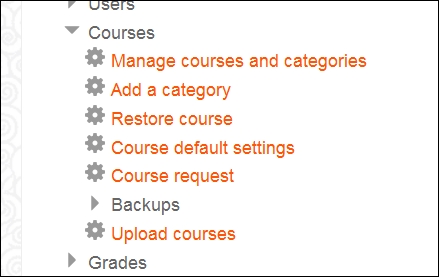As you start to configure your course, please think of this course as a template and a guide for the courses you'll use in the future. By developing a template, you can start to build a course design document. You will be surprised by how easily you can develop a unique framework that has a particular look and feel, that is, your own brand.
Start by adding a course from the Course Administration menu and configuring it so that it can be modified for the future courses in your program, certificate, or degree:

As you start to develop the courses, plan well so that the sequences, course names, course numbers, and descriptions are consistent and fit within a series of courses.

A good way to start is to think of the configuration of your course and the flow. How do you want your students to move through the course? How do you want your students to interact with you and their fellow students? The best way to start is to begin with the homepage.

By default...



